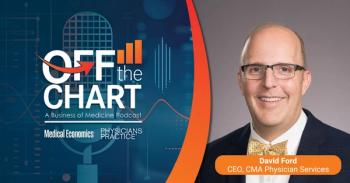
Four essential components for your vaccine rollout strategy
Create a plan to drive patient access, action, and adherence.
As the United States begins distribution of the COVID-19 vaccine, health systems are in the process of establishing their vaccination plans, and reports of chaotic scheduling are already making headlines. As provider organizations across the country struggle with the unprecedented operational and logistical challenges, some are even turning to popular consumer-grade platforms to facilitate patient communications and scheduling, opening themselves up for issues related to HIPAA compliance and patient privacy. There are also widespread reports of missed appointments resulting in wasted doses, and a lack of staff available to administer the vaccine appear to be contributing to a delayed and inefficient vaccine rollout. Cases are mounting while vaccines are sitting unused. Now is the time to implement a strategic plan.
It is crucial to effectively communicate the rollout process across all patient populations, bearing in mind that blanket communication does not resonate with everyone. The formula, however, is the same as any other patient engagement strategy: drive patient access, action, and adherence. Health systems will likely encounter some hesitancy from patients as they are surrounded by conflicting statements about the vaccine but becoming the voice of reason will help patients decipher factual information and block out the noise. As you begin your vaccine rollout plan, consider the following elements.
Become a Reliable Resource to Help Overcome Vaccine Hesitancy
It is important that the marketing department within a hospital or health system takes on the role of a trusted source for disseminating healthcare information and knowledge to the public. This also includes closely monitoring channels for misinformation that may falsely influence a patient’s opinion on the vaccine, the coronavirus disease or healthcare in general. Tailored patient communication is critical in establishing credibility during the pandemic, with patients likely to turn to the steadfast voice of their hospital or provider for guidance.
As a credible authority, hospitals and health systems can help patients who are confused or uncertain about where to find reliable information around the pandemic and COVID-19 vaccines. Health systems will also encounter those who are hesitant about receiving the vaccine. Providing trustworthy information helps patients feel more comfortable and knowledgeable when making vaccination decisions.
As the voice of reason, health systems should proactively provide current and easily digestible information on vaccine distribution and protocols, simultaneously reiterating its social distancing measures and precautions in place to keep patients safe.
Utilize Effective Patient Engagement Tools
Reaching patients during the pandemic and beyond happens via patient hotlines, online scheduling, virtual check-in and text reminders, and should be a combination of human interaction and online self-service. Using the same principles for the vaccine rollout will help to clearly and effectively communicate the step-by-step process to patients, capturing their attention and inducing action.
The vaccine will be distributed in phases prioritizing high risk adults, essential workers, and healthcare personnel. As an organization, it is important to ensure you’re able to provide screening questions online or by phone and target specific groups who are ready to schedule appointments. It’s also likely that patients and staff will have questions about the process. A dedicated COVID-19 vaccine hotline and an online chat to answer frequently asked questions will help people navigate the phases of the distribution and alleviate any concerns without placing an increased burden on internal resources
In the event the vaccine requires a booster after the first dose, you’ll want to remind all patients to return for a second dose. This may be in the form of a text, email, or phone call based on which channel will induce patient action for this important step.
Keep an Eye Out on Social Media
Health systems must also have a strong social media presence to break through the noise and dispel misinformation that users can obtain through social postings and other media. Marketing departments can’t control what is being said on Facebook groups or fringe conspiracy theory sites, for example, regarding misinformation about COVID-19 vaccines. However, they can certainly closely monitor activity on the health system’s social media pages, mentions, and comments to ensure all information and conversations are accurate. Health systems should act to empower patients to make informed decisions based on factual information.
Don’t Lose Sight of the Patient After the Vaccine is Given
The journey does not end once the patient is vaccinated. Conducting calls to check on the recipient’s well-being and symptoms after receiving the vaccine is highly recommended and will help foster a long-lasting relationship. You can also use this opportunity to remind the patient of their booster shot, or any other upcoming patient care needed. A positive patient experience will ensure your health system is top of mind should another health concern or appointment need arise.
About the Author
Matt Dickson is Vice President of Product, Strategy, and General Manager of Stericycle Communication Solutions. He is a versatile leader with strong operational management experience and expertise providing IT, product, and process solutions in the healthcare industry for nearly 25 years. Find him on
Newsletter
Optimize your practice with the Physicians Practice newsletter, offering management pearls, leadership tips, and business strategies tailored for practice administrators and physicians of any specialty.














